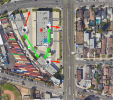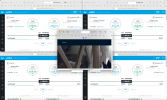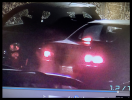TheWaterbug
Known around here
I bought a pair of the NS-5AC units and another LPR camera, for experimentation in my house, before I approach my industrial neighbor for cooperation to deploy. First impressions:And the documentation is silent both on what type of POE comes out the passthrough port, and what the maximum passthrough power is. One guy on the Ubiquiti forums says:
- Units unbox with a static IP address of 192.168.1.20.
- Why are manufacturers so allergic to DHCP for networking infrastructure products?
- As with the PLAs I played with last week, plugging into two of these guarantees an IP address conflict, right away.
- These NS-5AC units are supposed to boot up with a "management WiFi" network, but I prefer to configure them over Ethernet.
- I always forget that it's more efficient to set up the remote unit of the pair first, then set up the LAN side.
- But I got them configured for DHCP, plugged them in on opposite sides of my dining table, and powered them up.
- The link came up quickly, and the management tools give me pretty good feedback on link quality.
- The two units are literally 15' apart, so they're probably way too close for optimal connectivity, but it works and gives me a few hundred Mbps tested throughput via the management tool, and not through iperf, yet.
- Once I got the link up I changed the default SSID and WPA2 key (on the remote side first!!!), and enabled POE passthrough.
- It took me 30 minutes and a bunch of un/plugging to figure out why the camera didn't work, which was because these NS-5AC units come with 24 V passive POE adapters instead of 802.3af adapters. .
- The NS-5AC units put out whatever's put in, and most cameras use 802.3af, so this is a surprising choice given than Ubiquiti specifically advertises this feature for powering IP cameras.
- I can't imagine that there's a big difference in cost to Ubiquiti when they sell 802.3af adapters at retail for $8.00.
- Fortunately I have bunch of these lying around, so I was able to power up the NS-5AC units on 802.3af and power the camera through the pass-through ports from either unit.
- So, with this combination of features I'll be able to use one cable to power the LAN side of the bridge and one camera, and then walk over to my industrial neighbor with a set of stuff ask for permission to plug into AC power, and that'll establish the "B" bridge in my OP.
- Now that this works, I ordered a second pair to be my "A" bridge. I'll test first, but I'm hoping that, once the "A" units are paired, I can just connect the "Main" ports between Remote B and LAN A via a long Ethernet cable, and it'll just work.











